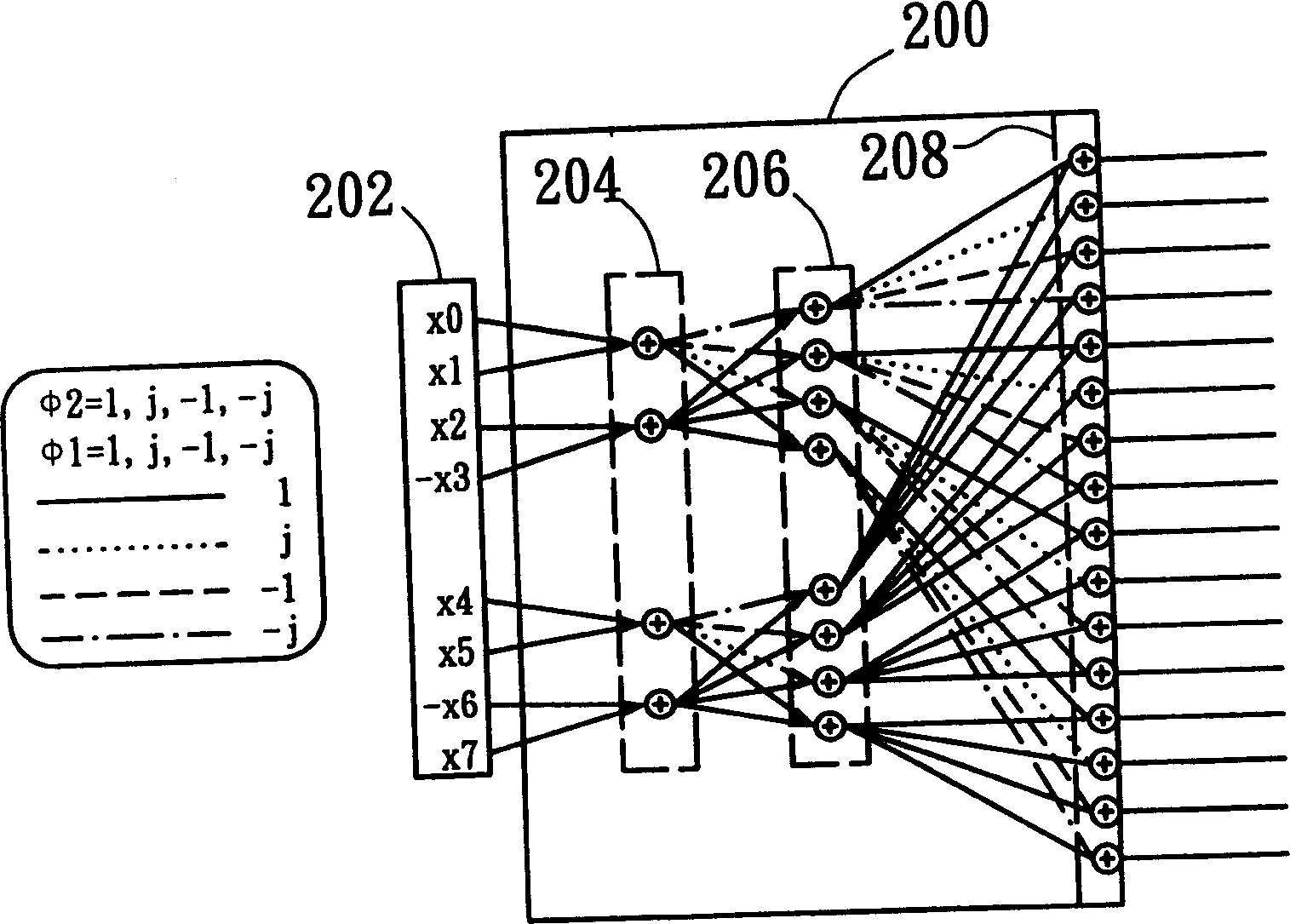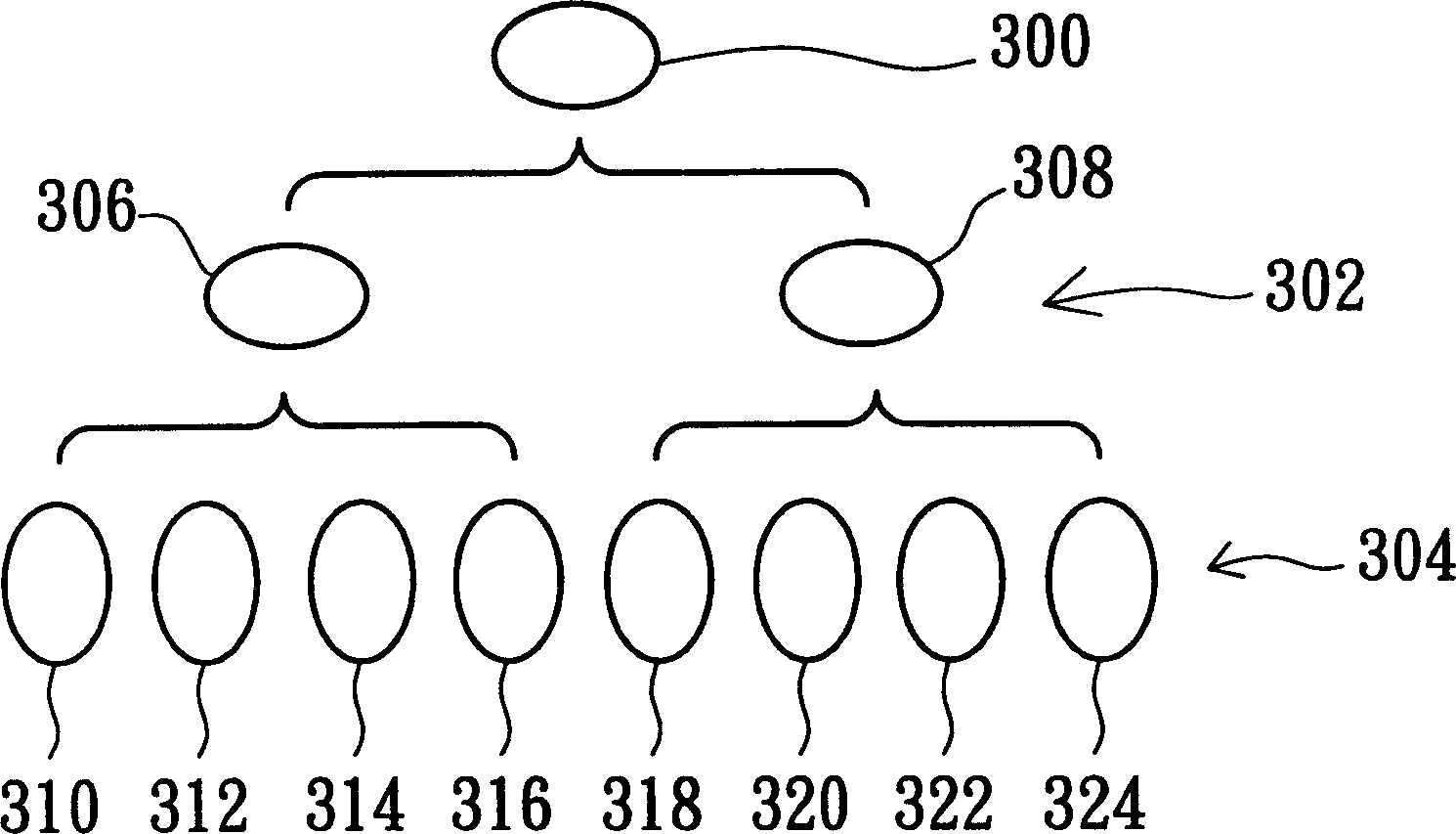Mutual-complementing code demodulating system
A technology of complementary codes and codewords, applied in the field of complementary codes, can solve the problems of reducing the anti-noise ability of complementary code modulation and anti-interactive symbol interference, etc., and achieve the effect of reducing geometric volume
- Summary
- Abstract
- Description
- Claims
- Application Information
AI Technical Summary
Problems solved by technology
Method used
Image
Examples
Embodiment Construction
[0149] The complementary code demodulation system provided by the present invention is designed for the non-completely orthogonal nature between 64 CCK codewords. At first, 64 CCK codewords need to be numbered, and φ1 is set to 0, (φ2 , φ3, φ4) from (0, 0, 0), (0, 0, π / 2), ..., (0, π / 2, 0), ..., to (3π / 2, 3π / 2 , 3π / 2), give these 64 complementary codes 64 numbers from 1 to 64 respectively.
[0150] After numbering the 64 CCK codewords according to the above numbering method, since the 64 CCK codewords are not completely orthogonal to each other, the 64 CCK codewords are grouped using a tree structure, please refer to Figure 3, It is a schematic diagram of tree structure grouping of 64 CCK codewords. The maximum mutual correlation between the 64 CCK codewords at the first stage 300 is 4√2. In the second stage 302 , the maximum correlation between the 32 CCK codewords in the first group 306 is 4, and the maximum correlation between the 32 CCK codewords in the second group 308 ...
PUM
 Login to View More
Login to View More Abstract
Description
Claims
Application Information
 Login to View More
Login to View More - R&D
- Intellectual Property
- Life Sciences
- Materials
- Tech Scout
- Unparalleled Data Quality
- Higher Quality Content
- 60% Fewer Hallucinations
Browse by: Latest US Patents, China's latest patents, Technical Efficacy Thesaurus, Application Domain, Technology Topic, Popular Technical Reports.
© 2025 PatSnap. All rights reserved.Legal|Privacy policy|Modern Slavery Act Transparency Statement|Sitemap|About US| Contact US: help@patsnap.com



